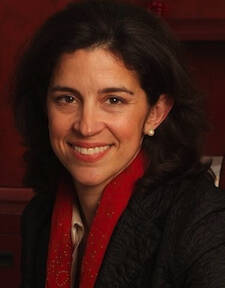Ranging around a used furniture shop last week, I discovered a painting of two Roman Catholic cardinals enjoying conversation over a glass of wine. When I picked it up to look more closely, the shop owner recommended that I read the consigner’s notes taped to the back. They began: “In times past, when cardinals and bishops enjoyed respect….”
A great deal more followed about the painter and the chain of title, but my mind lingered on that casual and cutting dismissal of the hierarchy. It is not as if I hadn’t heard such a judgment before. Yet this time it struck me how important it is for the church as a whole that this level of disregard come to an end. Of course, the hierarchy is not the sum of the church. Yet no matter any particular Catholic’s opinion of one bishop’s or all the bishops’ strengths and weaknesses, it is clear that the credibility of the church’s most visible teachers matters. Pope Francis’ relentless and inspired exhortations and efforts, addressed directly to bishops, are a sign that he takes this view. In fact, I think this will be one of the great Francis legacies, if he is able to complete the revolution he forwarded so forcefully in 2015: the empowering, the turning, the freeing up of more and more bishops toward becoming known and beloved pastors on the model of Jesus Christ.
Many Catholics and even non-Catholics have positive, pastoral experience of bishops. In my own case, I have only to think for a few minutes to remember the excellent career advice, frank spiritual diagnoses and consolation respecting family problems I have received from bishops over the years.
But I’m atypical. I get the chance to collaborate with the hierarchy and other religious leaders, week in and week out. More regular and informal contact between bishops and their flock could lead to greater mutual respect and understanding. It could grow the visible beauty of the faith in the world according to the pattern of its first growth: as a response to the seemingly impossible combination of goodness, authority and self-emptying love on the part of Jesus and then, later on, on the part of those whose lives he had transformed.
How to get closer to this situation?
Enter Francis and his continuing, tireless promotion in 2015 of the duty of bishops to instigate open-handed, personal encounters with the struggling, the disaffected, the bitter and the vulnerable. For a while, I wondered aloud whether—despite the barrels of ink and miles of camera footage expended on the Synod of Bishops on the family and on the pope’s U.S. visit—Francis’ ambitious 2015 agenda had left almost no “mark” on the church in the United States. I’ve concluded, however, that I was thinking too narrowly—professor that I am—and that his influence should not at all be measured by how many people are examining his written theology.
Instead, people are influenced by pictures and headlines about Pope Francis—bishop of Rome, first among equals—washing the feet of a Muslim prisoner, kissing a disfigured man, stepping out of his tiny car or laughing with his head thrown back on the cover of one or another People-style U.S. magazine. And every American with a pulse and an Internet connection knows that Francis is “reforming the Curia,” “cleaning up the Vatican bank” and launching councils, commissions, synods and a Year of Mercy, always with an eye to encouraging bishops in their role as pastors—not administrators, not power centers.
Francis is, of course, modeling mercy and justice for Catholics generally. But it is unmistakable that he is setting standards for the contemporary bishop as well. How do we “bring this home” to each diocese? The apostolic exhortation “The Joy of the Gospel” and Francis’ words at the closing of the meetings of the Synod of Bishops on the family and the opening of the Year of Mercy are obviously important parts of the blueprint. But so are his weekly and now yearly agendas “on foot”: who Francis visits, hugs and gives “alms” to.
At a diocesan level, how would this work? It’s not clear, but it could involve a deliberate choice to free up the bishop for more informal contact with his people, more teaching and pastoral care and then figuring out what kind of lay and religious expertise to bring on board to pick up the administrative work—putting first things first, in other words. Maybe it would require more bishops per square mile. All the elements of an answer await experimentation, but the need to experiment is clear.








